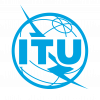BLOG
Telecom26 blog
IoT Security

We have discussed the ability of our Global eSIM cards to provide connectivity regardless of where in the world an IoT device is located - removing the headache of connectivity for both IoT project leaders and IoT device manufacturers.
We have also announced how we have enhanced security on our networks by working with Elisa Polystar to collect real-time information regarding network signalling and data which gives us an end-to-end view of service delivery across hundreds of networks that our IoT eSIMs are using.
Security is an issue of concern to everyone in the IoT ecosystem. Indeed only last week the Wi-SUN Alliance, a global member-based association of industry leading companies driving the adoption of interoperable wireless solutions for use in smart cities, smart utilities, IoT and industrial IoT (IIoT) applications, published some interesting new research with the headline:
IoT Security Fears Fall by Over 30% in the Last Five Years, Data Privacy Concerns Grow
Researchers interviewed 300 IT decision-makers in the US (200) and UK (100) in January and February this year and found that:
“Data privacy regulation is the second highest (political, economic, or social) challenge for IoT adopters, with 36% placing it in their top three, just behind the need to reprioritize spending due to Covid-19 (37%) and ahead of budget cuts resulting from less revenue during the pandemic (35%)”
The report cites a variety of reasons for the concern about data privacy including:
- more legislation putting the spotlight on data protection.
- stricter privacy laws that have increased pressure on organizations to protect sensitive data. This includes the GDPR in Europe and various state-level laws in the US.
- a growing number of attacks on IoT devices over the last two years leading to the theft of confidential data and the launch of DDoS attacks.
The report concludes that the industry needs to work together to “overcome both technical and non-technical challenges”.
Telecom26’s IoT Connectivity Pedigree
At Telecom26 we are helping with the rollout of IoT networks across a range of vertical markets. You can read more in these previous blogs:
IoT, Telecom26 and security
IoT Security is a subject that is almost always raised by our IoT customers and prospects.
To help share their knowledge, our IoT Security team put together a white paper Security for critical infrastructure - The role of IoT and Non-Public Networks.
This 12-page document sets out the security vulnerabilities of IoT ecosystems - and discusses how Telecom26 solves these significant IoT Security issues.
We know that many IoT devices and sensors are inherently insecure – they are often remote and unmanned, and the outcome of an IoT attack (leading to loss of service) can have catastrophic consequences for both businesses and individuals alike.
To summarise, at Telecom26 we provide data encryption from SIM to application server, static IPs, control/firewall of IP traffic, vulnerability protection and IMEI locking
In a nutshell, cellular IoT offers better protection and fewer vulnerabilities as it’s possible to authenticate every device and user, while limiting (or managing) all access to any device or sensor.
If you’d like to find out how Telecom26 can help your organisation to embrace the benefits of IoT Networks, improve IoT connectivity and maximise IoT Security please contact us.
Catching-Up In-Person
Later in the year Telecom26 will be attending these major international trade fairs:
SMM
6-9 September
Hamburg, Germany
Mets Trade
15- 17 November
Amsterdam
MEDICA 2022
14–17 November 2022
Düsseldorf, Germany
If you, or one of your team, will be at any of these shows and would like to discuss our IoT and global connectivity services in-person then please book a meeting.



